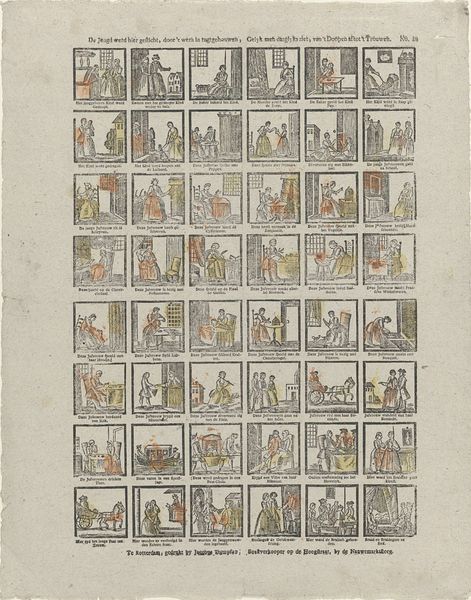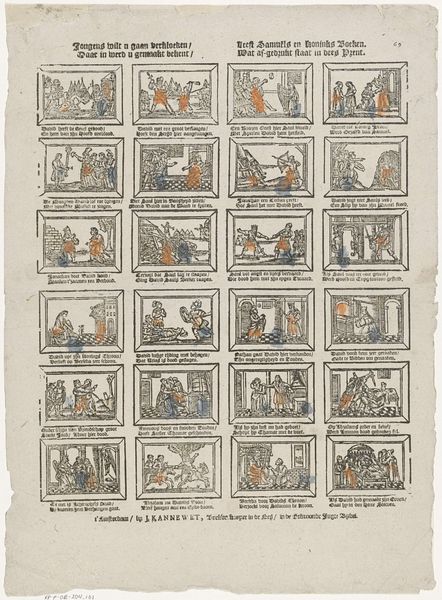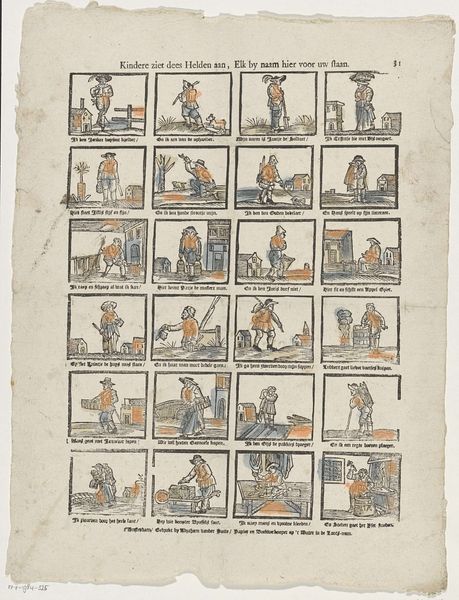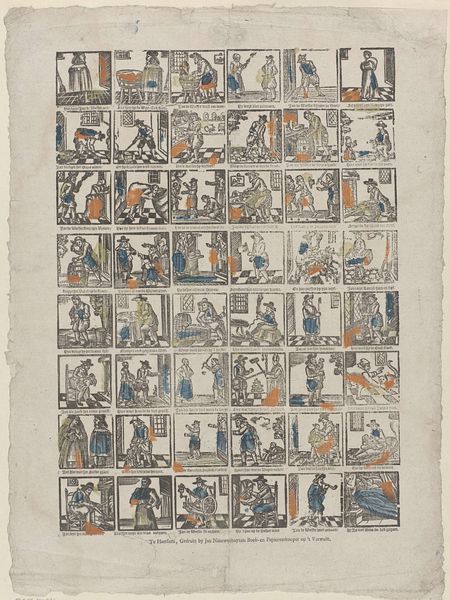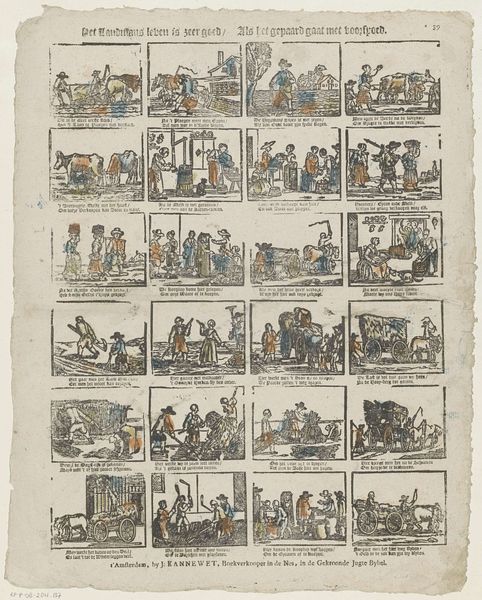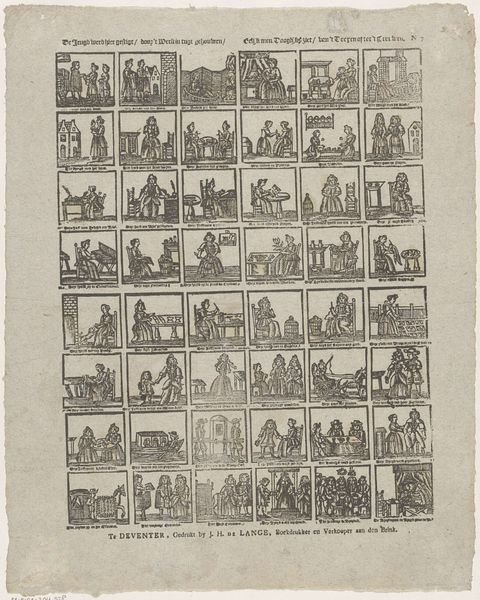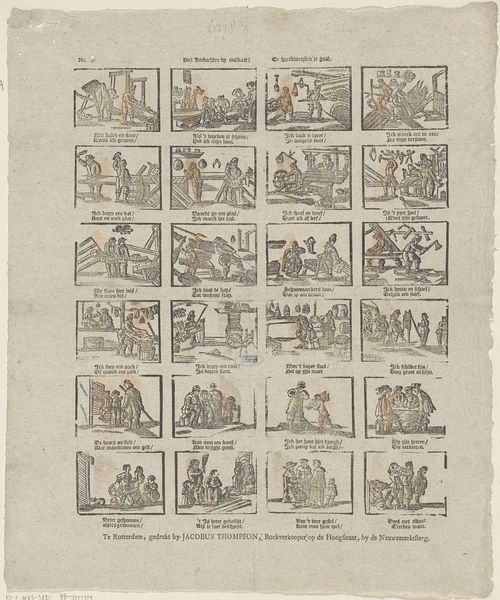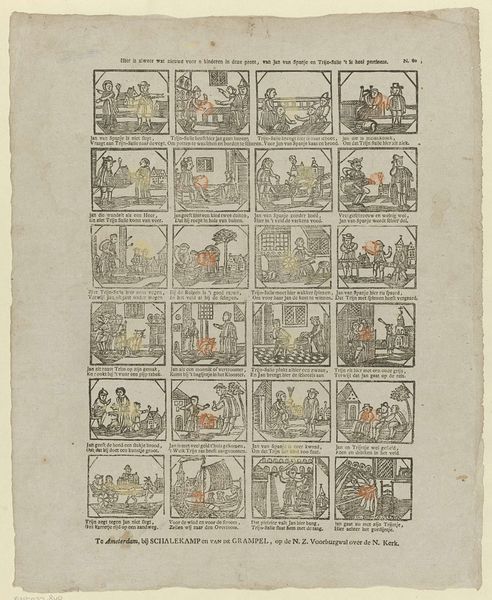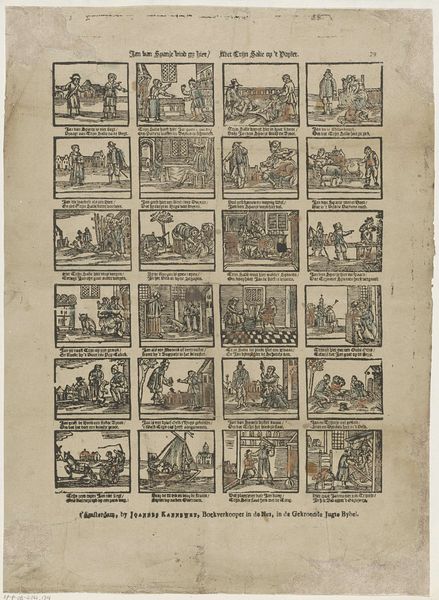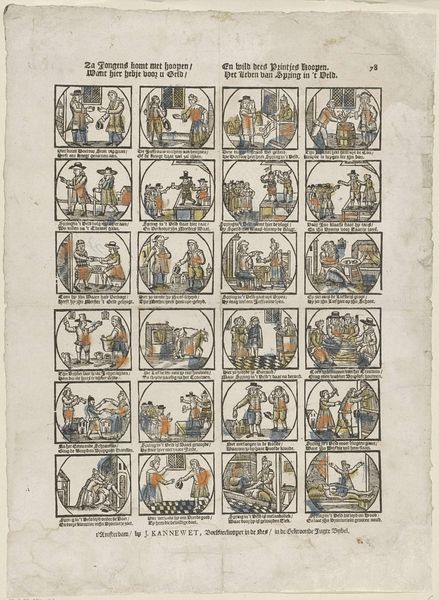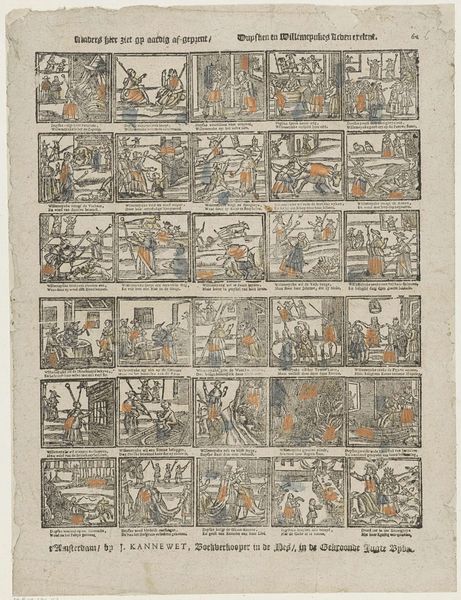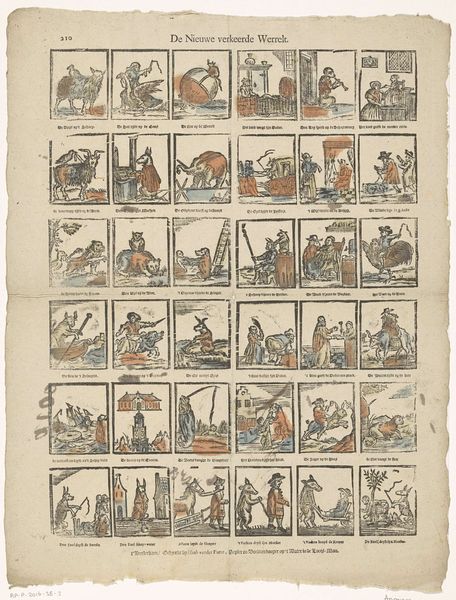
Siet hier o jonge jeugt / en merkt met behagen / hoe 't Westfaalse Geesje haar in Amsterdam heeft gedragen 1748 - 1761
0:00
0:00
print, textile, woodcut
#
narrative-art
#
dutch-golden-age
# print
#
textile
#
woodcut
#
genre-painting
Dimensions: height 430 mm, width 305 mm
Copyright: Rijks Museum: Open Domain
Curator: This print, created by Abraham van der Putte between 1748 and 1761, is titled "Siet hier o jonge jeugt / en merkt met behagen / hoe 't Westfaalse Geesje haar in Amsterdam heeft gedragen". Editor: Immediately striking is the composition, so rigidly organized. This grid of vignettes, the minimal color palette… it all speaks to a controlled, didactic purpose. Curator: Indeed. It’s fascinating to consider this work as a narrative aimed at moral instruction, specifically addressing young people. The print recounts the experiences of a young woman, Geesje, from Westphalia, in Amsterdam, perhaps serving as a cautionary tale or a celebration of adaptability. How might this story have resonated with young women navigating social expectations in that era? Editor: I'm drawn to the artist's rendering of space. Note how each scene is framed. There's an intentional focus, despite the limitations of the woodcut technique. See how those simple lines suggest depth and volume within these compressed narratives. Curator: That technical precision surely highlights the engraver’s intent to showcase morality lessons and broader societal functions. And this work is about Geesje adapting into Amsterdam. What would you suppose that narrative speaks about at this historical moment, the perceived cultural roles of migrant communities? Editor: To be able to decode cultural significance is interesting but not something I often worry about. However, when the individual is concerned, the lines provide the narrative: stark and precise and unbending! They remind us how a series of these boxes shows life moving step-by-step toward its inescapable resolution. The grid becomes less a storytelling tool and more like fate as each stroke dictates the scene ahead of it. Curator: So you’re arguing the artistic qualities of each stroke dictate how you personally feel? As the formal aspects and elements? As this helps you read into the artwork beyond what it truly could have intended as a moral compass? Editor: Yes. And isn’t it always the beauty of interpretation, finding new meaning that has personal truth to it? Curator: Absolutely. Analyzing this work allows us to access multiple dimensions of the artwork by reading into its visual cues but contextualizing societal meaning. Editor: And allowing our truths to shine through.
Comments
No comments
Be the first to comment and join the conversation on the ultimate creative platform.
